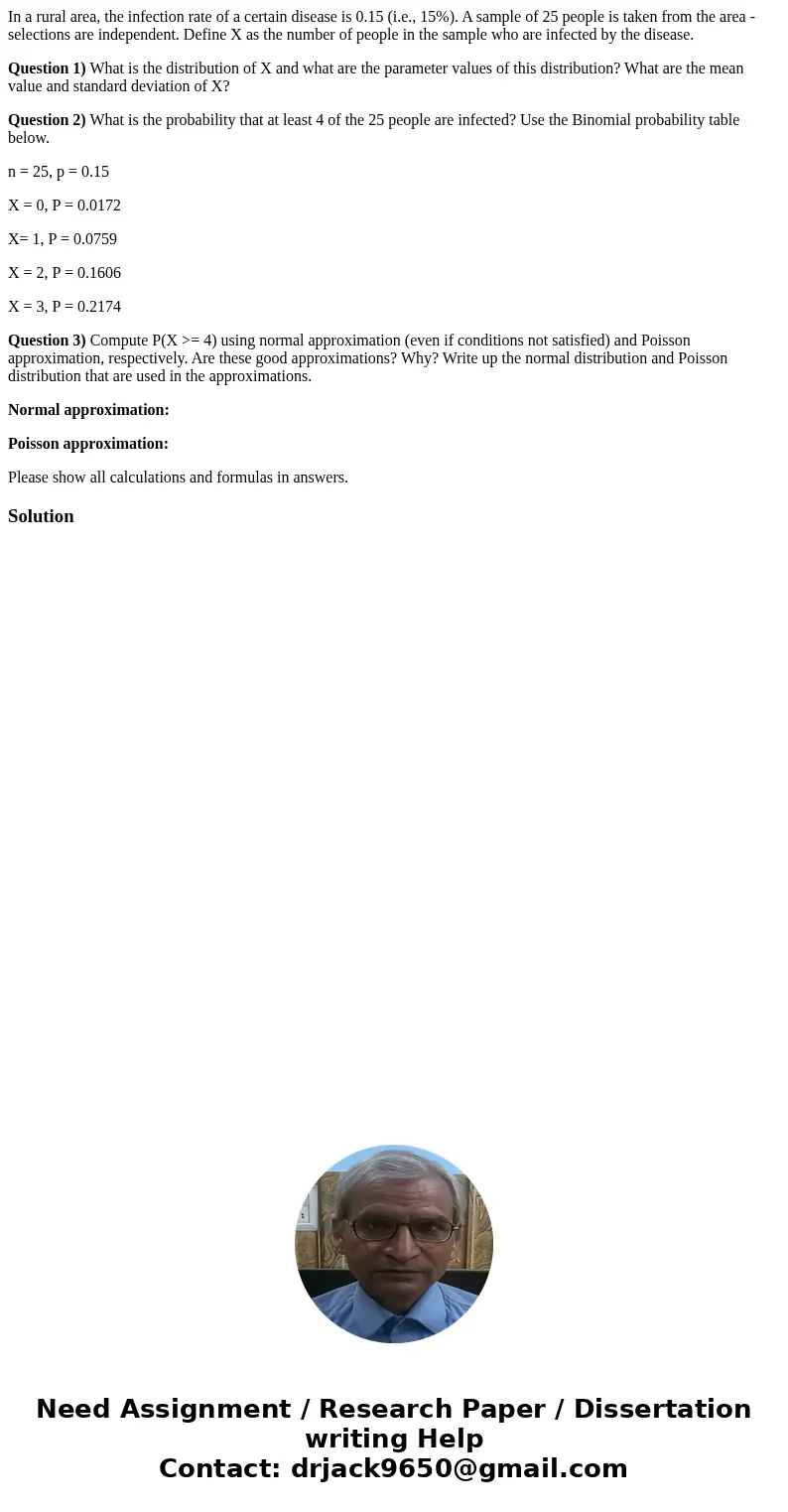In a rural area the infection rate of a certain disease is 0
In a rural area, the infection rate of a certain disease is 0.15 (i.e., 15%). A sample of 25 people is taken from the area - selections are independent. Define X as the number of people in the sample who are infected by the disease.
Question 1) What is the distribution of X and what are the parameter values of this distribution? What are the mean value and standard deviation of X?
Question 2) What is the probability that at least 4 of the 25 people are infected? Use the Binomial probability table below.
n = 25, p = 0.15
X = 0, P = 0.0172
X= 1, P = 0.0759
X = 2, P = 0.1606
X = 3, P = 0.2174
Question 3) Compute P(X >= 4) using normal approximation (even if conditions not satisfied) and Poisson approximation, respectively. Are these good approximations? Why? Write up the normal distribution and Poisson distribution that are used in the approximations.
Normal approximation:
Poisson approximation:
Please show all calculations and formulas in answers.
Solution

 Homework Sourse
Homework Sourse